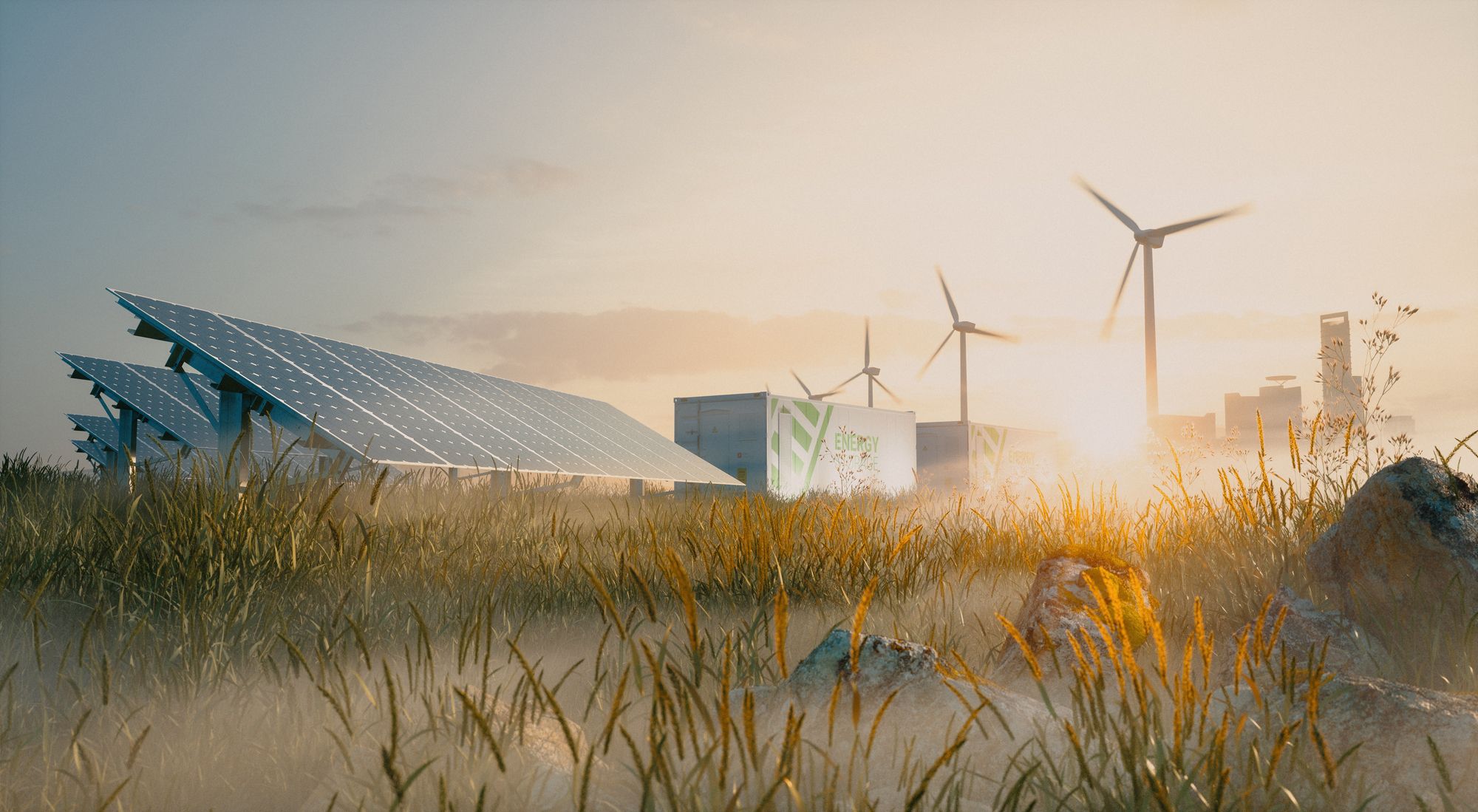In the face of growing energy demand and considerations for climate change, the development of energy farm projects is a crucial aspect of combating greenhouse gas emissions and striving for a sustainable future. In this article, we will delve into the analysis of photovoltaic (PV) farms, wind farms, biogas plants, and biomethane plants, focusing on their advantages, challenges, and future prospects.
- Photovoltaic (PV) Farms
Photovoltaic farms, also known as solar power plants, convert solar energy into electricity using photovoltaic panels. They are widely used worldwide and offer several advantages:
Advantages of PV farms:
- Renewable energy source: Solar energy is a renewable source, meaning it does not deplete land resources irreversibly.
- Low operating costs: After installing photovoltaic panels, operating costs are relatively low, and the panels have a long lifespan.
- Low CO2 emissions: PV farms generate minimal amounts of carbon dioxide during operation, contributing to the reduction of greenhouse gas emissions.
- Scalability flexibility: PV farm capacity can easily be increased by adding new solar panels as energy demand grows.
Challenges of PV farm projects:
- Spatial requirements: PV farms require a significant amount of space, which can be challenging in areas with limited land access.
- Weather dependency: The efficiency of PV farms is highly dependent on weather conditions and the amount of available sunlight.
- Energy storage: Without energy storage systems, photovoltaic farms cannot provide energy at night or on cloudy days.
- Initial investments: Initial investments in photovoltaic panels can be high, although costs decrease as technology becomes more widespread.
- Wind Farms
Wind farms harness wind energy to generate electricity using wind turbines. They are effective in areas with consistent winds and offer numerous advantages:
Advantages of wind farms:
- Renewable energy source: Wind is a renewable energy source, contributing to sustainable development.
- High efficiency: Wind farms generate a significant amount of energy, making them attractive in terms of efficiency.
- CO2 emissions reduction: Compared to conventional energy sources, wind farms generate minimal carbon dioxide emissions.
- Long lifespan: Wind turbines have a long lifespan, allowing for long-term investments.
Challenges of wind farm projects:
- Location: The necessity to place wind farms in areas with constant wind can limit available construction sites.
- Aesthetics and noise: Some residents may protest against wind farms due to their impact on the landscape and emitted noise.
- Energy storage requirement: Like PV farms, wind farms require advanced energy storage systems.
- Initial investments: Wind turbines are costly, both in terms of purchase and maintenance.
- Biogas Plants
Biogas plants use the fermentation process of organic materials, such as food residues, animal manure, and plants, to produce biogas, which can be used for energy production. Here are the main advantages and challenges of biogas plant projects:
Advantages of Biogas Plants:
- Waste utilization: Biogas plants allow for the utilization of organic waste, reducing the amount of waste going to landfills.
- Renewability: Biogas is a renewable energy source, and biogas production can continue for many years.
- Methane emissions reduction: Biogas plants help reduce methane emissions, a potent greenhouse gas.
- Production of organic fertilizers: The fermentation process also produces organic fertilizers that can be used in agriculture.
Challenges of Biogas Plant Projects:
Raw material availability: The success of biogas plants depends on access to suitable raw materials, such as organic waste, agricultural residues, or manure. Insufficient raw materials can significantly impact plant efficiency.
Technology and design: Choosing the right technology and biogas plant design is crucial. Well-designed installations and the selection of appropriate equipment and processes can significantly impact efficiency and profitability.
Investment costs: Building biogas plants involves high investment costs, including the purchase of equipment, infrastructure, and land. The ability to secure financial resources and project cost management are key challenges.
Operational management: Effective operational management of biogas plants, including fermentation process control and maintenance of equipment, is essential for achieving optimal biogas production.
